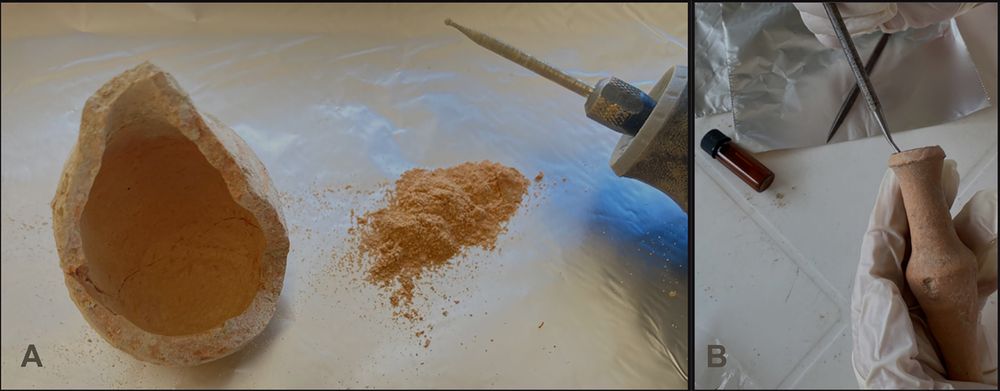

🐴 The medieval taboo of horse consumption
🦁 The Chinese origins of Venice's iconic Winged Lion statue
🧊 Tattooed ice mummies of the Siberian Altai
& much more! 🏺
www.cambridge.org/core/journal...
"...the largest survival of the hull of any 17th-century ship in UK waters and one of the most complete 17th-century Dutch shipwrecks outside of the Baltic."
And now you can read the e-book for nothing...
🏺 #Archaeology

"...the largest survival of the hull of any 17th-century ship in UK waters and one of the most complete 17th-century Dutch shipwrecks outside of the Baltic."
And now you can read the e-book for nothing...
🏺 #Archaeology

🏺 #Archaeology
🏺 #Archaeology

🏺 #Archaeology
doi.org/10.15184/aqy...

doi.org/10.15184/aqy...
Known for the iconic Alhambra, the Nasrids made use of architecture to display their power.
🆓 doi.org/10.15184/aqy...
🏺 #Archaeology

Known for the iconic Alhambra, the Nasrids made use of architecture to display their power.
🆓 doi.org/10.15184/aqy...
🏺 #Archaeology
Variations in the weave and colour reflect the diversity of textile production in Bronze Age Anatolia.
🆓 doi.org/10.15184/aqy...
🏺 #Archaeology

Variations in the weave and colour reflect the diversity of textile production in Bronze Age Anatolia.
🆓 doi.org/10.15184/aqy...
🏺 #Archaeology
New research proposes it was part of an Indigenous system of accounting and exchange.
🆓 doi.org/10.15184/aqy...
🏺 #Archaeology

New research proposes it was part of an Indigenous system of accounting and exchange.
🆓 doi.org/10.15184/aqy...
🏺 #Archaeology
🦁 How Venice's iconic Winged Lion may originate in China
🪙 Ancient economic connections from Bangladesh to Vietnam
⛏️ How British tin shaped Mediterranean civilisations
www.cambridge.org/core/journal...
🏺#Archaeology

🦁 How Venice's iconic Winged Lion may originate in China
🪙 Ancient economic connections from Bangladesh to Vietnam
⛏️ How British tin shaped Mediterranean civilisations
www.cambridge.org/core/journal...
🏺#Archaeology
🔗 from 2024 🆓 doi.org/10.15184/aqy...
🏺 #Archaeology

🔗 from 2024 🆓 doi.org/10.15184/aqy...
🏺 #Archaeology
DNA analysis of sardines used to make the Roman fish sauce garum found they used European sardines (Sardina pilchardus), which are still present in Atlantic Europe today
🆓 doi.org/10.15184/aqy...
🏺 #Archaeology

DNA analysis of sardines used to make the Roman fish sauce garum found they used European sardines (Sardina pilchardus), which are still present in Atlantic Europe today
🆓 doi.org/10.15184/aqy...
🏺 #Archaeology
with @oeai.bsky.social @oeaw.bsky.social @mnhn.fr UMR7206 Ecoanthropology and @pacea.bsky.social
www.cambridge.org/core/journal...

with @oeai.bsky.social @oeaw.bsky.social @mnhn.fr UMR7206 Ecoanthropology and @pacea.bsky.social
www.cambridge.org/core/journal...
🏺 #AntiquityResearch #ArchaeologyNews via @heritagedaily.bsky.social
www.heritagedaily.com/2025/11/jewe...

🏺 #AntiquityResearch #ArchaeologyNews via @heritagedaily.bsky.social
www.heritagedaily.com/2025/11/jewe...
The original photo is owned by Queen Guitarist Brian May!
#stonehenge #wiltshire #stonecircle

🆓 doi.org/10.15184/aqy...
🏺 #Archaeology

🆓 doi.org/10.15184/aqy...
🏺 #Archaeology
🆓 doi.org/10.15184/aqy...
🏺 #Archaeology

#archaeology
#indigenousheritage
#openaccess

#archaeology
#indigenousheritage
#openaccess
Someone in the Early Modern prison of Noto Antica, Sicily clearly loved the classics, carving a gameboard for Nine Men's Morris onto their cell wall!
🆓 doi.org/10.15184/aqy...
🏺 #Archaeology

Someone in the Early Modern prison of Noto Antica, Sicily clearly loved the classics, carving a gameboard for Nine Men's Morris onto their cell wall!
🆓 doi.org/10.15184/aqy...
🏺 #Archaeology


antiquity.ac.uk/news

antiquity.ac.uk/news
'Dead Man's Chest' explores both the entertaining tales and cruel reality of piracy. Read our review in the latest #NewBookChronicle 🆓 doi.org/10.15184/aqy...
🏺

'Dead Man's Chest' explores both the entertaining tales and cruel reality of piracy. Read our review in the latest #NewBookChronicle 🆓 doi.org/10.15184/aqy...
🏺
A female figure or deity greets a charioteer. Possibly holding a spear, they may indicate connections to Phoenician gods Melqart and Baal
🆓 doi.org/10.15184/aqy...
🏺 #Archaeology

A female figure or deity greets a charioteer. Possibly holding a spear, they may indicate connections to Phoenician gods Melqart and Baal
🆓 doi.org/10.15184/aqy...
🏺 #Archaeology
🏺 #AntiquityResearch #ArchaeologyNews via @labrujulaverde.bsky.social

🏺 #AntiquityResearch #ArchaeologyNews via @labrujulaverde.bsky.social
@antiquity.ac.uk

@antiquity.ac.uk
🆓 doi.org/10.15184/aqy...

🆓 doi.org/10.15184/aqy...
🆓 doi.org/10.15184/aqy...
🏺 #Archaeology

🆓 doi.org/10.15184/aqy...
🏺 #Archaeology

